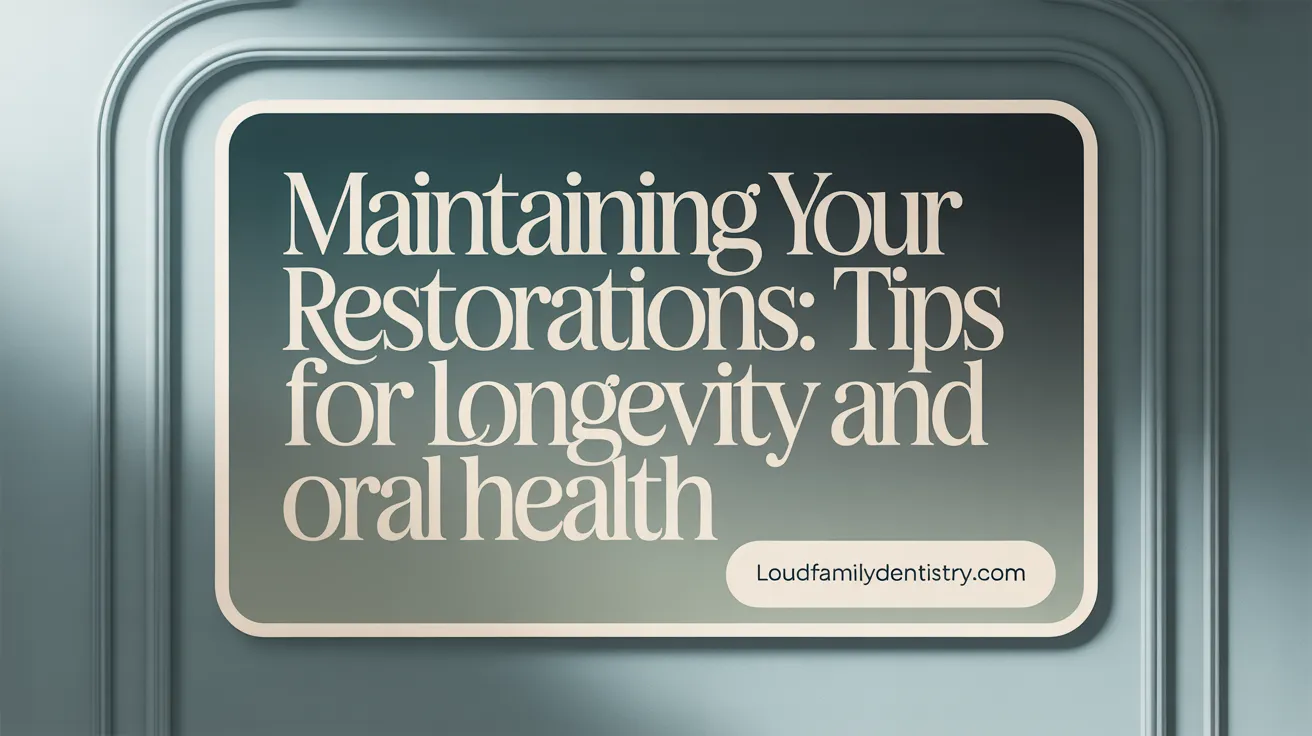Introduction to Restorative Dental Treatments
Restorative dental treatments play a crucial role in repairing damaged teeth and replacing missing ones, helping millions regain full oral functionality and confidence in their smiles. This article unpacks the fundamental restorative options available—crowns, bridges, and dental implants—exploring their functions, procedures, benefits, and care requirements. By understanding these treatments, patients can make informed decisions for long-term dental health and aesthetic satisfaction.
What Are Restorative Dental Treatments and Their Importance?

What are restorative dental treatments such as crowns, bridges, and dental implants?
Restorative dental treatments encompass various procedures designed to repair or replace damaged or missing teeth, aiming to restore oral health, function, and appearance. Crowns are caps placed over damaged teeth to support and protect them, often made from porcelain, ceramic, or metal. Bridges involve attaching artificial teeth supported by crowns on adjacent natural teeth to fill gaps caused by missing teeth. Dental implants are titanium posts surgically inserted into the jawbone, serving as strong, durable anchors for crowns or bridges, closely resembling natural teeth in both appearance and function.
Other common procedures include fillings, inlays, onlays, root canal therapy, and dentures, chosen based on specific dental needs. These treatments significantly improve the ability to chew, speak, and smile confidently. The selection of procedure depends on factors like the extent of tooth damage, location, patient's health, and long-term goals, ensuring personalized and effective care.
What is the purpose and what are the benefits of dental restorations?
The main goal of dental restorations is to repair or replace compromised teeth, restoring their original function, shape, and aesthetics. They are crucial for maintaining proper bite alignment and preventing further oral health issues such as infections, fractures, or tooth loss.
Restorative treatments offer numerous benefits. They enhance chewing efficiency and speech clarity, reduce discomfort from damaged teeth, and improve facial aesthetics, boosting self-confidence. For example, crowns and bridges solidify damaged teeth and prevent further decay, while implants offer a permanent solution that stimulates jawbone health and mimics natural teeth.
Additionally, these procedures serve a preventive purpose by safeguarding adjacent teeth from shifting, which can lead to misalignment or additional dental problems. Overall, dental restorations support long-term oral health, functionality, and psychological well-being, ensuring individuals can enjoy a healthy, attractive smile with confidence.
Detailed Overview of Crowns, Bridges, and Dental Implants

What are crowns, bridges, and dental implants, and how do they differ?
Crowns are customized caps that fit over damaged or weakened teeth to restore their shape, appearance, and function. They are often used after root canal treatment or large fillings to protect the tooth from further damage.
Bridges, on the other hand, are used to fill gaps left by missing teeth. They consist of artificial teeth, called pontics, held in place by crowns cemented onto adjoining natural teeth that are shaved down to accommodate the bridge.
Dental implants are surgically placed posts, typically made of titanium, inserted into the jawbone. They act as artificial roots, supporting crowns or bridges. Unlike crowns or bridges that rely on neighboring teeth or existing structures, implants fuse directly with the jawbone through a process called osseointegration, offering a durable and natural-feeling replacement.
What materials are used in crowns and bridges?
Crowns are made from various materials depending on their location and functional requirements. Common options include porcelain, ceramic, gold, or a combination of metal and porcelain for better durability and aesthetics.
Bridges often use similar materials, especially for the pontic and supporting crowns. Porcelain and ceramic are popular for their natural appearance, while metal components add strength for areas with significant biting forces.
What are the different types of dental bridges?
| Type of Bridge | Description | Best Suited For |
|---|---|---|
| Traditional | Consists of crowns on adjacent teeth with a pontic in between | Multiple missing teeth in the back or front |
| Cantilever | Supported by a crown on only one side of the gap | Specific cases where adjacent teeth are only on one side |
| Maryland (Resin-bonded) | Uses metal or porcelain wings bonded to the back of adjacent teeth | Front teeth or less extensive gaps |
| Implant-supported | Rest on dental implants rather than supporting teeth | Multiple missing teeth requiring firm support |
How do dental implants work, including osseointegration?
Dental implants involve surgically placing a titanium post into the jawbone. Over several months, the implant integrates with the bone in a process called osseointegration, forming a sturdy foundation.
Once healing is complete, a connector called an abutment is attached to the implant, and a crown or bridge is fixed onto it. This procedure restores function, appearance, and prevents bone loss in the jaw.
How do these restorations compare in longevity and durability?
| Restoration Type | Typical Lifespan | Durability Factors | Comments |
|---|---|---|---|
| Crowns | 5 to 15 years or more | Material choice, oral hygiene, habits like grinding | Can last decades with proper care |
| Bridges | 5 to 15 years | Maintenance, supporting teeth health | May need replacement due to wear or decay |
| Dental Implants | 20 years or lifetime | Proper oral hygiene, bone health, material quality | Often lasts a lifetime with maintenance |
Restorative dentistry offers various options tailored to individual needs. While crowns and bridges are effective and more affordable, implants provide a long-lasting and natural-feeling solution that preserves jawbone health.
Procedures Involved in Receiving Crowns, Bridges, and Dental Implants
 Getting restorative dental treatments like crowns, bridges, and implants involves several detailed steps, each tailored to the specific procedure.
Getting restorative dental treatments like crowns, bridges, and implants involves several detailed steps, each tailored to the specific procedure.
Step-by-step procedure for crowns begins with the dentist preparing the affected tooth. This involves removing a portion of the tooth’s enamel to create space for the crown, which helps it fit securely. Next, impressions of the tooth are taken to craft a custom crown, often made of porcelain, ceramic, or metal. While the permanent crown is being fabricated, a temporary one may be placed. Once ready, the new crown is cemented onto the prepared tooth, restoring its shape, strength, and appearance.
Bridge fabrication and placement process also starts with preparing the adjacent teeth. The dentist shaves down these teeth to support the bridge, which consists of crowns on either side and a false tooth (pontic) filling the gap of the missing tooth. Impressions are then taken to create the bridge. Some dental clinics use advanced CAD/CAM technology to design and produce it quickly, sometimes in the same visit. The final bridge is cemented onto the prepared teeth, restoring chewing function and preventing neighboring teeth from shifting.
Surgical and healing stages of dental implants are more involved. The process begins with surgically placing a titanium post into the jawbone, serving as an artificial root. This step requires precision, as the post must be securely anchored. After placement, a healing period follows—usually several months—during which osseointegration occurs, meaning the implant fuses with the bone to provide stability. Once healing is complete, an abutment is attached to the implant, serving as the connector for the final crown, which is affixed afterward.
Importance of treatment planning and evaluations cannot be overstated. Dentists assess each patient’s oral health, bone density, and overall suitability for implants or other restorations. This thorough review ensures the success and longevity of the treatment.
Timeframes and recovery considerations vary depending on the procedure. Crowns and bridges generally require one or two appointments over a few weeks, with minimal downtime. Implants, however, involve multiple stages—surgical placement, healing, and final restoration—spanning several months. Recovery from implant surgery may involve swelling and discomfort, with most patients able to return to normal activities within a few days, though full healing varies.
Caring for Restorative Dental Work: Tips and Maintenance

What are some tips and guidance for caring for restorative dental work?
Proper maintenance of your dental restorations is essential for their longevity and performance. Start with excellent oral hygiene practices, including brushing twice daily using a soft-bristled, non-abrasive fluoride toothpaste. Flossing regularly helps remove plaque buildup around restorations like crowns, bridges, or fillings and prevents gum disease.
Are there dietary considerations to protect restorations?
Yes. Avoid hard, sticky, or crunchy foods that could damage or dislodge your restorations. For example, eating caramel, nuts, or ice might harm dental restorations, leading to fractures or looseness. Additionally, limiting acidic foods and beverages like citrus or soda protects against erosion of the materials used in crowns and bridges.
How often should I visit the dentist for professional care?
Regular dental visits are crucial. Schedule check-ups and professional cleanings at least twice a year. During these visits, your dentist can monitor the condition of your restorations, check for signs of damage such as chips or looseness, and address any issues early. These routine visits also help prevent more serious problems like infections or decay beneath or around the restorations.
Can protective devices help safeguard my dental work?
Absolutely. Wearing a mouthguard during sports can prevent physical damage, while a nightguard can protect against teeth grinding (bruxism), which can wear down or crack restorations over time. These simple devices are effective in reducing stress on dental work and preserving your smile.
What signs should I watch for that may indicate problems?
Be alert for symptoms like sensitivity, pain, looseness, chipping, or visible cracks in your restorations. Unusual changes, such as swelling, bleeding, or bad taste, could also indicate infection or damage. If you notice any of these issues, see your dentist promptly to avoid further complications and ensure your restorations remain functional and comfortable.
| Aspect | Recommendations | Additional Tips |
|---|---|---|
| Oral hygiene | Brush twice daily, floss regularly | Use interdental brushes, water flossers |
| Dietary habits | Avoid hard, sticky foods | Limit acidic and sugary foods |
| Regular visits | Biannual dental check-ups | Professional cleanings and exams |
| Protective measures | Use mouthguards during sports | Wear nightguards if grinding |
| Recognizing issues | Watch for sensitivity, looseness | Seek immediate dental care if needed |
Maintaining your restorative dental work involves consistent care and attention. Following these guidelines helps keep your teeth healthy, functional, and attractive for years to come.
Making Informed Choices: Understanding Your Restorative Options

What are the available restorative dental options for improving dental health?
Restorative dental options include a range of procedures to repair and replace damaged or missing teeth. Common treatments are fillings, crowns, bridges, dentures, and dental implants. Fillings are used to fill cavities caused by decay, often made from composite resins that blend with natural teeth. Crowns serve as caps that cover damaged or weakened teeth, restoring their shape and strength, and are made from materials like porcelain or metal.
Bridges replace missing teeth by anchoring artificial teeth to adjacent teeth, which are prepared with crowns. Types of bridges include traditional, cantilever, Maryland, and implant-supported options. Dentures can be full or partial and are removable devices that replace multiple teeth or entire arches.
Dental implants are a longer-lasting solution, consisting of titanium posts surgically inserted into the jawbone, acting as artificial roots. They support crowns, bridges, or dentures and can last over 15 years. Procedures like inlays/onlays and root canal therapy are also part of restorative care, tailored based on the damage’s extent.
How can patients understand and choose among different restorative dental treatments?
Choosing the right treatment involves consultation with your dentist. It’s important to assess your specific oral health needs and discuss all available options. Patients should consider their budget, the longevity of the treatment, aesthetic preferences, and recovery time.
Educational resources, asking questions about the procedures, and understanding their benefits and potential risks assist in making informed decisions. Seeking second opinions can also provide additional perspectives. Ultimately, the goal is to select a restoration that restores oral function, improves appearance, and fits within your lifestyle.
Factors to consider when selecting a restorative treatment include:
| Treatment Type | Cost Range | Durability | Aesthetic Appeal | Recovery Time |
|---|---|---|---|---|
| Fillings | Low to moderate | 5-10 years | Good | Immediate |
| Crowns | Moderate to high | 5-15 years | Excellent | Few days to weeks |
| Bridges | Moderate to high | 5-15 years | Good | Few days |
| Dentures | Moderate | 5-8 years | Variable | Few days |
| Dental Implants | High | 15+ years | Excellent | Several months |
Proper care and regular dental visits are essential to prolong the lifespan of these restorations.
Why consulting your dentist and considering insurance coverage matter?
A thorough dental consultation helps ensure that the selected treatment aligns with your oral health needs and personal circumstances. Discussing potential costs and your insurance policy is crucial, as coverage varies. Most dental insurance plans cover basic procedures like fillings and simple crowns, while more extensive treatments such as implants may involve higher out-of-pocket expenses.
Understanding your insurance benefits before treatment helps manage financial expectations. Dentists also guide patients on maintaining their restorations and preventing further issues, ensuring long-term satisfaction.
Balancing patient needs and long-term goals
Making the best choice involves balancing immediate concerns like cost and comfort with long-term health and function. While traditional options like crowns and bridges are cost-effective and effective, dental implants offer superior durability and a more natural feel.
Ultimately, good communication with your dental provider and a clear understanding of each treatment’s benefits and limitations enable you to make decisions that support your oral health and confidence.”}**}#}#END#}
Summary: Enhancing Oral Health through Informed Restorative Choices
Restorative dental treatments such as crowns, bridges, and implants offer proven solutions to repair and replace damaged or missing teeth, fundamentally improving oral health, function, and appearance. Understanding the differences, procedures, and care requirements empowers patients to select treatments aligned with their needs and goals. Regular maintenance and professional follow-up ensure these restorations last, supporting confident smiles and long-term dental well-being. By collaborating closely with dental care professionals, patients can navigate restorative options effectively, achieving healthier and more attractive smiles that enhance quality of life.
References
- Restorative Dentistry: What It Is, Types & Procedures
- Dental Restorations: Implants, Crowns, Bridges Explained
- Learning About Restorative Dentistry
- Restorative Dentistry: Fillings, Crowns, and Bridges ...
- Dental Implants vs. Crowns and Bridges
- Dental Bridges: Types & Who Needs Them
- Restorative Dental Treatments
- Restorative Dentistry: What It Is, Types & Procedures
